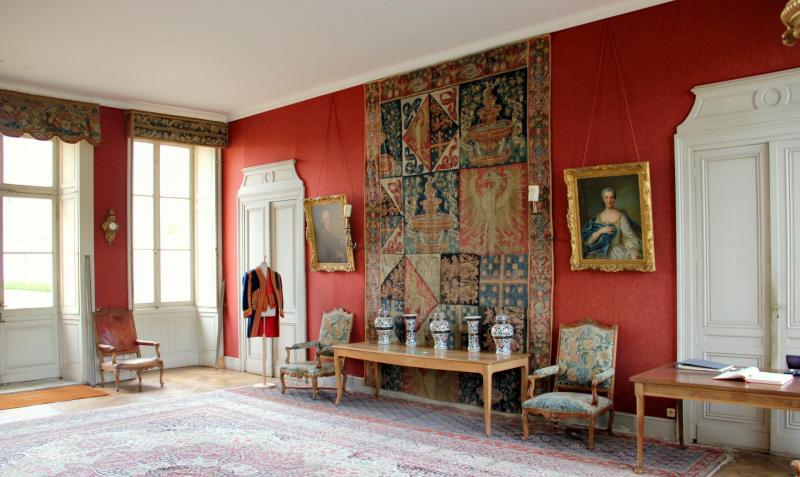From one family to another
Loyal to the dukes
Jean de Cortiamble owned the estate in 1346: he inherited it from his uncle Pierre de Commarin who died childless. He re-built the castle at the end of the 14th century. His son Jacques extended the castle by adding two round towers and the chapel. The same Jacques accompanied John the Fearless to the crusade of Nicopolis and was taken prisoner with him. After two years of negotiation (he had to raise the money for the ransom), he came back home along with the duke.
Golden Fleece
Jacques' daughter married Jean de Dinteville; when Jacques died in 1427, his son-in-law inherited the castle. Their son died with Charles the Bold in front of the walls of the city of Nancy. Later, Commarin fell to the Vienne family, a very old family. One of their members , Guillaume, was the first knight of the Golden Fleece, an order created by Duke Philip the Good.
The accident
The estate was raised to the level of a county in 1588 for Antoine de Vienne, and Charles I de Vienne rebuilt the castle, as did his son, Charles II. Architect Philippe Pâris laid out a vast courtyard surrounded by outhouses and built another classical dwelling house at the bottom of the court, flanked by two wings. In this brand new castle, Anne de Chastellux, Charles'wife , gave birth to a daughter, Marie-Judith, in 1699. Two years later, her mother wrote in her diary of the following accident: " A tower collapsed , at noon, during lunch. We had already noticed that it was in ruin. This tower was located in the dwelling house where my daughter's bedroom was, so I was really scared. I ran into the courtyard, the nurse showed me my daughter by the window. We did not know how to reach the room, because the staircase had collapsed too. This accident incited us to repair."
Talleyrand's grandmother
By marriage, the Damas became Commarin's new owners, as Marie-Judith de Vienne married Joseph-François de Damas, marquess of Antigny, and became later Talleyrand's grandmother (Talleyrand was one of Napoleon I 's ministers). She became a widow at the age of 37, with two dependent children, plus a castle, lands....and debts. But she did not lose courage. She took care of her money, lived a simple life, managed her possessions sensibly, faced up to her creditors, gave a good education to her children and a good dowry to her daughter. She entirely refitted the castle:new outhouses and stables, and replanted the neighbouring wood in 1747. She died in 1780, at the age of 81.
At the beginning of the 20th century, here was Diane Pastré, Charles de Vogüe's widow; she had a life of luxury in Paris, but also reserved all her energy for her Burgundian castle, which she restored and modernized.
The one who never left
In 1793, the Marquess Charles de Damas was arrested by the Revolutionaries and locked up in jail. But the inhabitants of Commarin liked him and succeeded in having him released . But he was arrested once more. This time, the castle was sold as an émigré possession . Still, he never left Burgundy. He showed some written proofs , saying he had never left his castle, and he was released for good.
The visit of the castle
Discover the Large Room ( 18 m long and 9 m wide); plays used to be performed here. We can still see the pulleys for the sets, between the beams. Marie-Judith "repaired this room", as she wrote.
Then we have Marie-Judith's nice living-room with its typical Burgundian flooring , its family portraits and paintings. Here is a portrait of King Henri IV of France...tradition says he fell in love with Madame de Cypierre , a relative of the Vienne. She received him one day in Commarin. Henri was represented as a hunter, at the feet of the infatuated lady.
Don't miss the living-room with its gorgeous tapestries, with fresh and bright colours. They date back to the 15th century: coats of arms belong to the Dinteville and Vienne families. Marie-Judith restored them and put them back on the walls, because she loved them.
